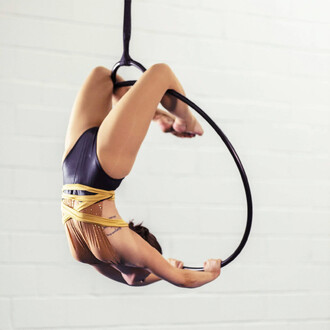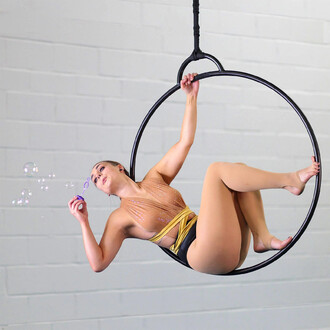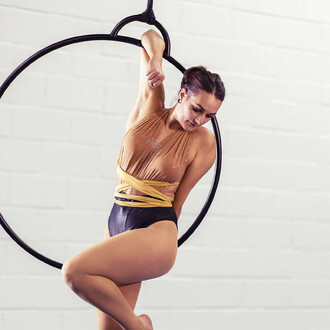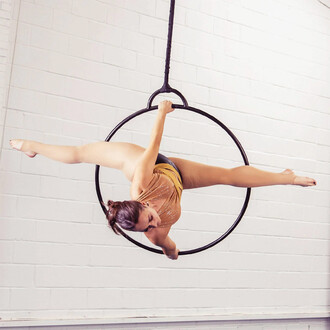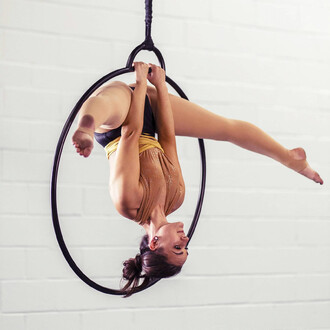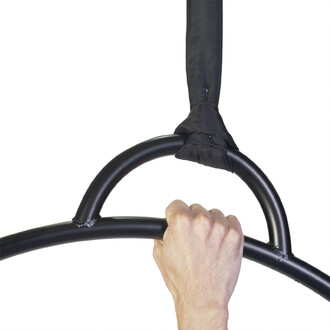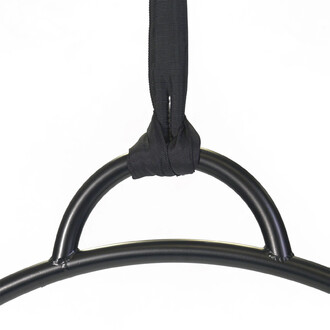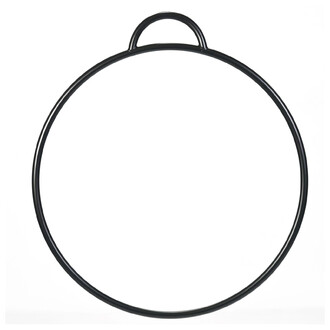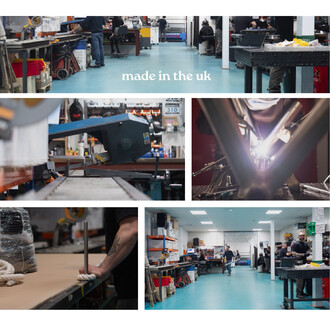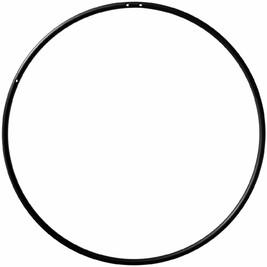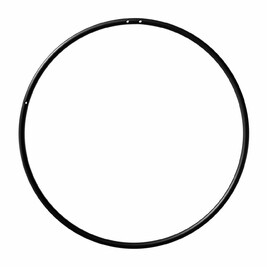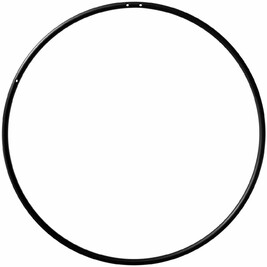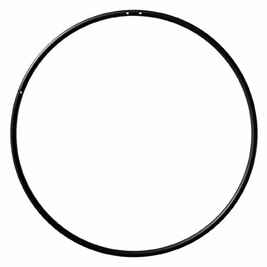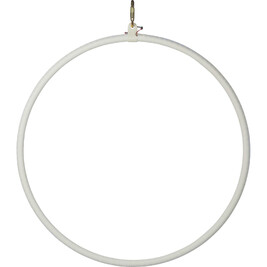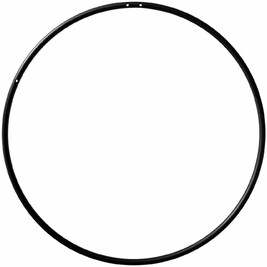Bubble Aerial Hoop – Unique Design
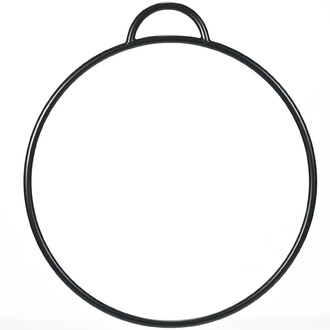

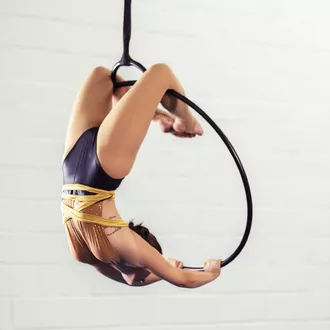
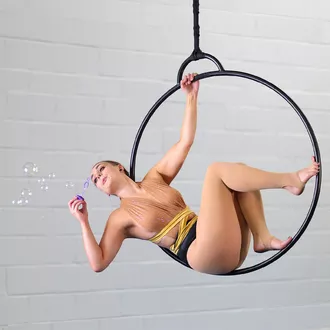
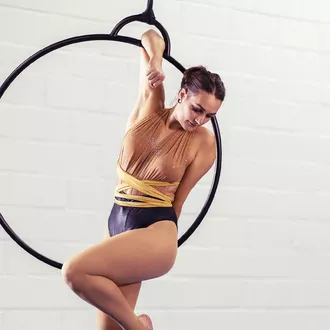
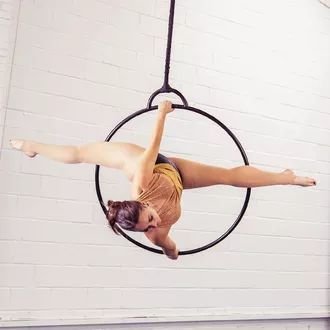

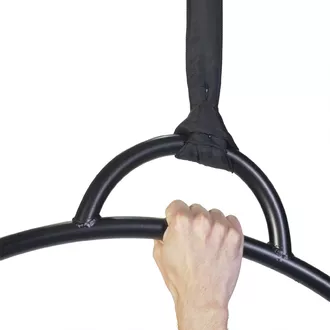
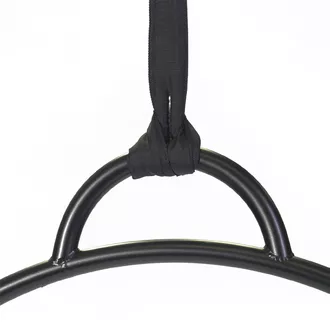
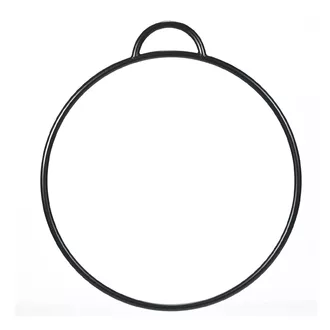
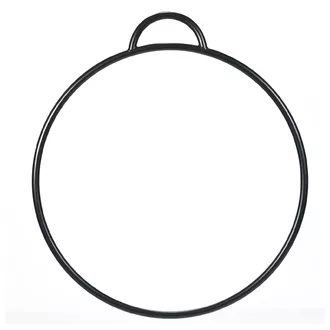
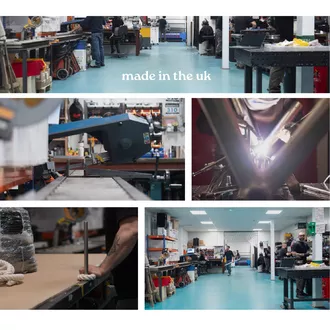
Product sold individually. Available in three sizes to choose from: 90cm, 95cm, 100cm.
Introducing the Bubble Aerial Hoop
The Bubble Aerial Hoop is an aerial show accessory designed with precision and innovation. Sometimes nicknamed the "taco hoop", this unique aerial hoop opens up new possibilities for training and performance . Available in three sizes (90cm, 95cm, 100cm), it offers a compact and safe alternative to traditional aerial hoops.

Made in the UK and fully certified by an independent safety firm, the Bubble Hoop combines lightweight , durability and a stylish aesthetic . Constructed from 10G steel tubing with a 1 inch (25.4mm) diameter and 3mm wall thickness, this aerial hoop is TIG-welded for maximum strength.

The powder-coated galvanized finish with a matte black coating not only beautifies the appearance of the hoop, but also protects the steel from rust and makes it easy to clean. Ready to use with or without tape, the Prodigy Bubble Hoop is designed to provide a safe and enjoyable experience.

With a working load capacity (WLL) of 160kg when rigged to a simulated anchor point, this aerial hoop ensures safe and reliable use. Whether you are looking to create new tricks, train your grip strength or add a unique visual dimension to your performances, the Prodigy Bubble Hoop is the ideal accessory.

What diameter of aerial hoop should I choose?
The diameter of your aerial hoop is chosen according to your height. When sitting on the hoop, there should be 10cm of headroom. You can measure this by sitting on a chair (e.g. height between the chair and your head = 70cm, so you will need an aerial hoop with an internal diameter of 80cm). If you are buying for a circus school where several people will be using the same hoop, this space may vary slightly and extend up to 15cm.
With this method, you will be sure not to hit your head on the top of the hoop when you are sitting. If you are teaching students who vary in height, remember to check that they cannot hit their head before you begin :-).
Adhesive tape coating:
The hoop comes ready to be covered with fabric grip. We recommend the Prodigy Snake Tape . This grip has the particularity of not releasing glue residue on the hands and body, even after intensive use of the hoop. An aerial hoop grip is put in place starting from the bottom to the top. And the sides are done independently and meet in the center at the top.

Our opinion on the bubble aerial hoop
An innovative and original design. Great versatility for the creation of new aerial figures. The high quality steel manufacturing ensures good durability even during intensive use. The possibility of choosing between three sizes allows customization according to the specific needs of each artist.
Technical specifications of the bubble hoop
- External size : 90cm, 95cm, 100cm
- Internal size : 85cm, 90cm, 95cm (deduction of 5cm)
- Material : 10G (25.4mm) steel tubing with 3mm wall
- TIG welding with mild steel insert
- Coating : Powder-coated, matte black finish
- Working load capacity (WLL) : 160kg
- Safety factor (FOS) : 5:1
- Certification : Tested and certified by an independent testing firm
- Contents : 1x Bubble Aerial Hoop, 1x Information Sheet, 1x Logbook, 1x Protective Foam Cover
Who is the bubble aerial hoop for?
The Aerial Hoop is designed for aerial artists , jugglers , performers and amateurs who want to add visual effects and innovative movements to their performances. Ideal for dance shows , festivals , night events or any occasion requiring a spectacular aerial touch. Its unique design and three available sizes make it suitable for various spaces and the specific needs of each artist. Previous experience with aerial equipment is highly recommended, and it is essential to follow safety instructions when using it.
How to set up an aerial hoop: the essential conditions
1. Height required for an aerial hoop
To set up an aerial hoop, a minimum ceiling height of 4 metres is recommended. This does not mean that the hoop must be at this height, but it is essential to have space above and below the hoop to ensure optimal use. Anything less than 4 metres may limit your movement, which could lead to frustration. For example, when hanging or standing on the hoop, you will need enough space to perform movements safely. Swinging the hoop also requires additional space to prevent the equipment from acting like a simple swing.
2. Difference between dynamic and static
It is important to understand that a body in motion on a hoop can exert up to three times the force of its stationary weight. When using an aerial hoop, you are in constant motion, which requires a fixture that can support much more than your static weight. So make sure the fixture is rated for dynamic loads, not just static ones.
3. Fixing an aerial hoop at home
Safety is paramount: whether for you or your child, installing a hoop should not be taken lightly.
Installing an aerial hoop is not something you can improvise. It is strongly recommended to consult a rigging specialist, an architect or a mason. Each building is unique, with different materials and structures, so it is crucial to ensure that your installation is compliant and safe.
4. Fixing an aerial hoop in a professional environment
If you are planning to install an aerial hoop in a professional setting, it is essential to call on experts to carry out a complete study and install the anchor points. Do not take any risks by carrying out the installation yourself without the advice of qualified professionals.

Delivery outside the EU
For delivery outside the European Union countries, additional delivery costs may be added. Our website does not know how to calculate these costs, we invite you to contact us so that we can establish a quote together to deliver this item to you.
Aerial Hoop Returns and Exchanges Information
We find that many customers order aerial hoops without taking the time to read the description or advice on choosing the right size.
In case of size error, the return and shipping costs of a new hoop will be entirely at your expense. Note that these costs can be high, as an aerial hoop exceeds the standard dimensions of the carriers.
To avoid any inconvenience, do not hesitate to contact us before your purchase if you have any doubts. Our team is easily reachable by phone (which is rare these days!) , and we will be happy to advise you.
Comment / Question
!Be the First to comment!
